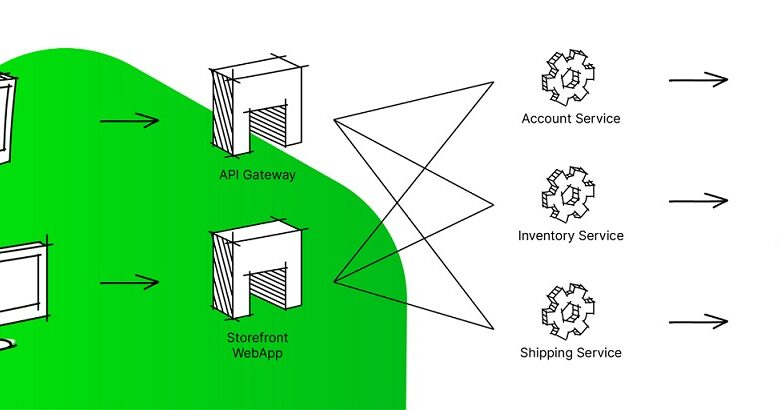
There are a few critical steps to create deployable microservices using software containers. Today’s most successful dev teams are realizing that distributed microservices architecture works well in many complex build situations. After all, these innovative frameworks promote flexibility, empower freedom, and streamline integration processes. Of course, there is no universal solution or action plan to take these services into a live production environment. Despite this, there are a few general, fairly common steps that software developers, just like you, need to keep in mind. This way, you can master all the cloud storage platforms, software engineering tools, and supporting technologies needed to bring your vision to life. To get started now, read on to learn how to create deployable microservices using software containers.
Begin With A Monolith
Before you can start creating and deploying, you need to get started with a monolith for your container-based microservice applications. In short, a monolithic application is a single-tiered, self-container software product that runs independent from other computing platforms. This is incredibly helpful to prepare for the world of microservices. After all, these applications are known to be more complex, with multiple runtime instances. Also, every one of these instances must be individually constructed, released, scaled, and monitored. Definitely, get started with a monolith when creating deployable microservices with containers.
Assemble A Build Team
With your monolith prepared, assemble an experienced build team to bring your deployable microservices goals to life. There are several responsibilities to delegate throughout the design, configuration, and deployment of process. You’ll need to divide your codebases, implement fail recovery patterns, and promote network recovery operations. Plus, it is critical to manage data consistency and manage server load requirements. This is where having a skilled, reliable team comes into play. These knowledgeable professionals will help you quickly move through this process and handle all the tedious, time-consuming tasks. This way, you can focus on more pertinent, bigger picture items. Surely, build team configuration is critical to create deployable microservices within software containers.
Configure The Tech Stack
Next, configure your tech stack with the latest programming tools and resources. There’s several supporting technologies you’ll want to equip your microservice development pipeline with. For example, you can use software supply chain solutions by JFrog to deliver trusted microservices, simplify compliance, and innovate with scalability. With these resources in place, you can integrate security into your DevOps workflow and streamline compliance assurance. After all, you’ll have everything needed to automate security, control risk, and resolve vulnerabilities. Indeed, tech stack configuration is one of the most important steps to create deployable microservices using software containers.
Deploy Your Microservices
At this point, it is officially time to deploy your container-based microservices. Begin the process by modularizing your self-contained services. This will make them available as reusable, standalone elements powered by business process automation. Then, you can connect different services together using bindings. When picking out these connectable bindings, prioritize options that can be easily controlled and manipulated. After you’ve done so, deploy your services individually. Of course, this is known to promote flexibility and minimize impacts to custom software applications. Certainly, deployment is a critical release phase to create microservices using software containers.
Promote Continuous Delivery (CD)
Once you get into container-based microservice release, you’ll want to promote continuous delivery. The main idea behind CD is to get your software up and running quickly, reliably, and securely. To implement these procedures, you need to automate recurring approval, testing, and verification processes required for production. Adopting this approach, microservice delivery cycles are much faster. Plus, updates are far shorter in time. This means that there is a much lower risk and burden on system performance or stability. When you establish your CD strategy, be sure to focus on models that assure zero downtime. As of 2022, some of the most popular models or rolling, canary, or blue-green. Absolutely, promote continuous delivery to maintain a strong microservice delivery pipeline even after system release.
There are a few key steps to create deployable microservices using software containers. First off, get started with a monolithic software application. Then, take time to assemble an experienced, versatile, and reliable build team. Next, assemble your tech stack with the latest tools, resources, and technologies. At this point, it is time to deploy your microservices into live production environments. Even after release, keep a strong focus on promoting continuous delivery (CD) throughout your pipeline. Follow the points highlighted above to learn how to create deployable microservices using software containers.




